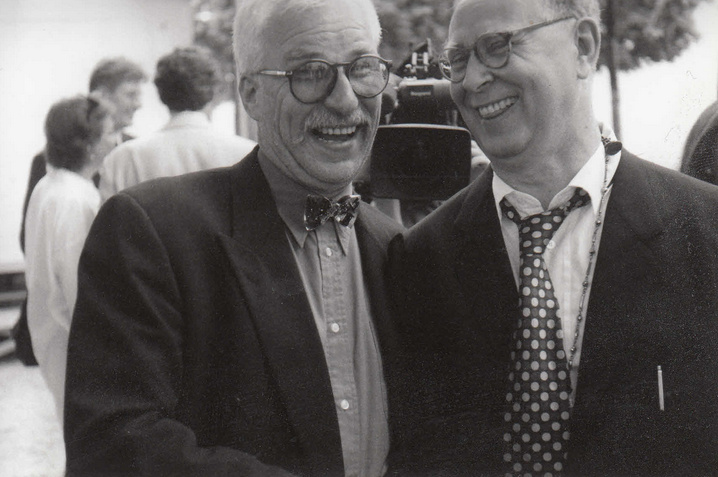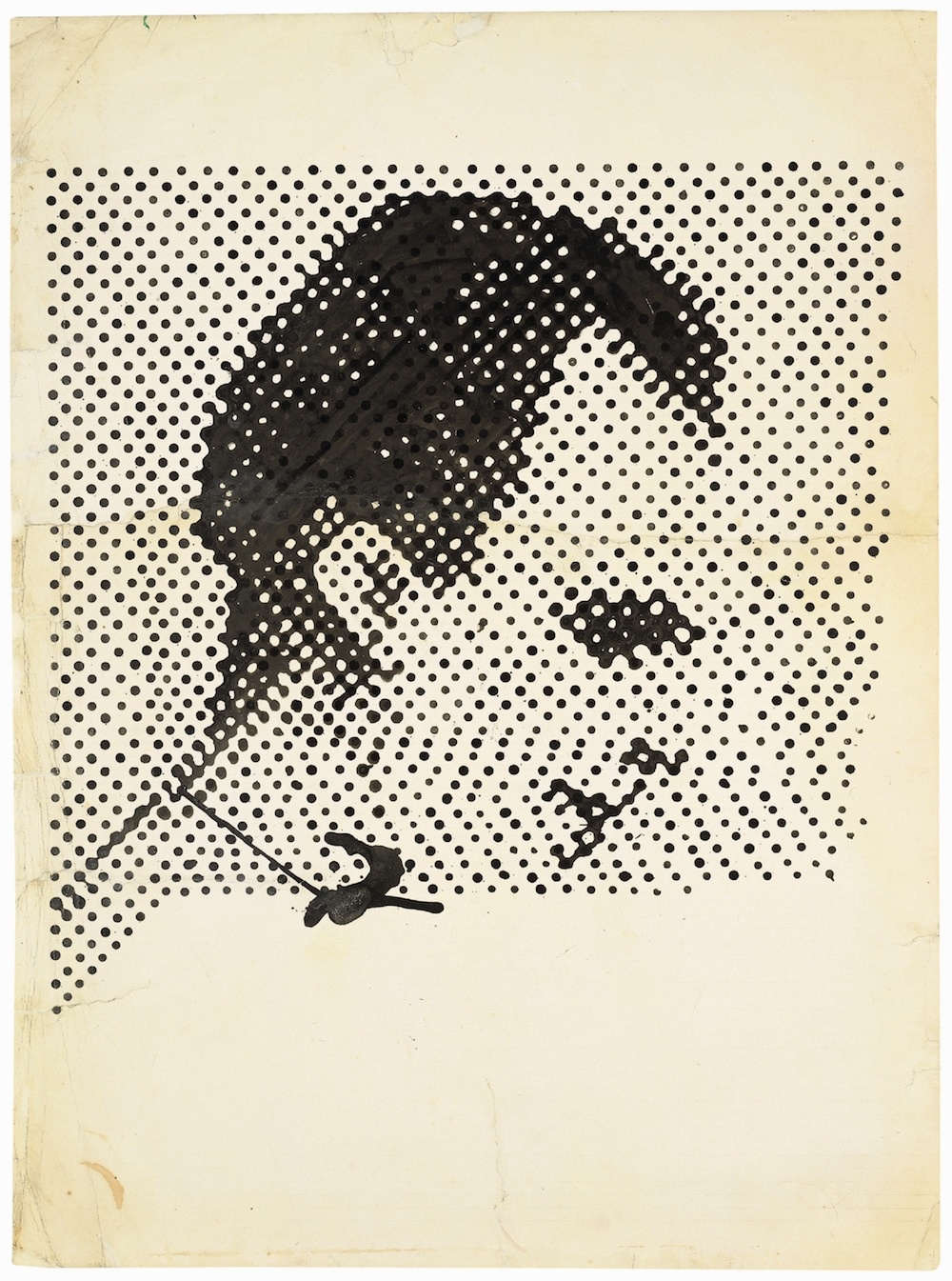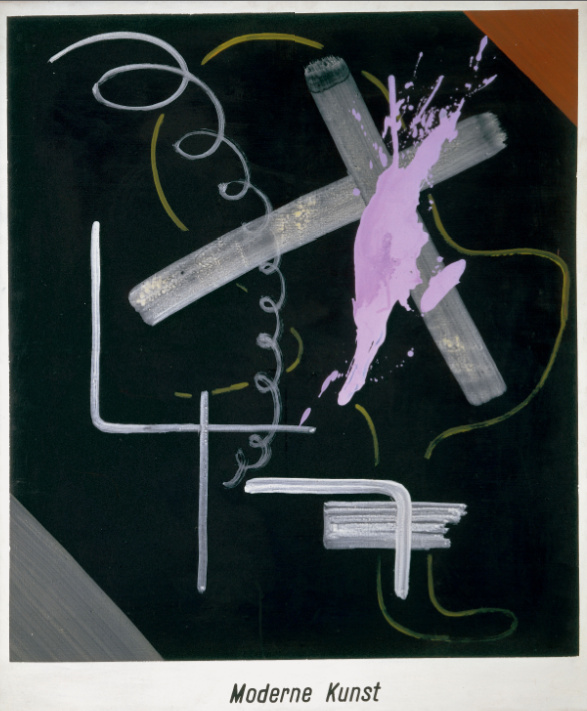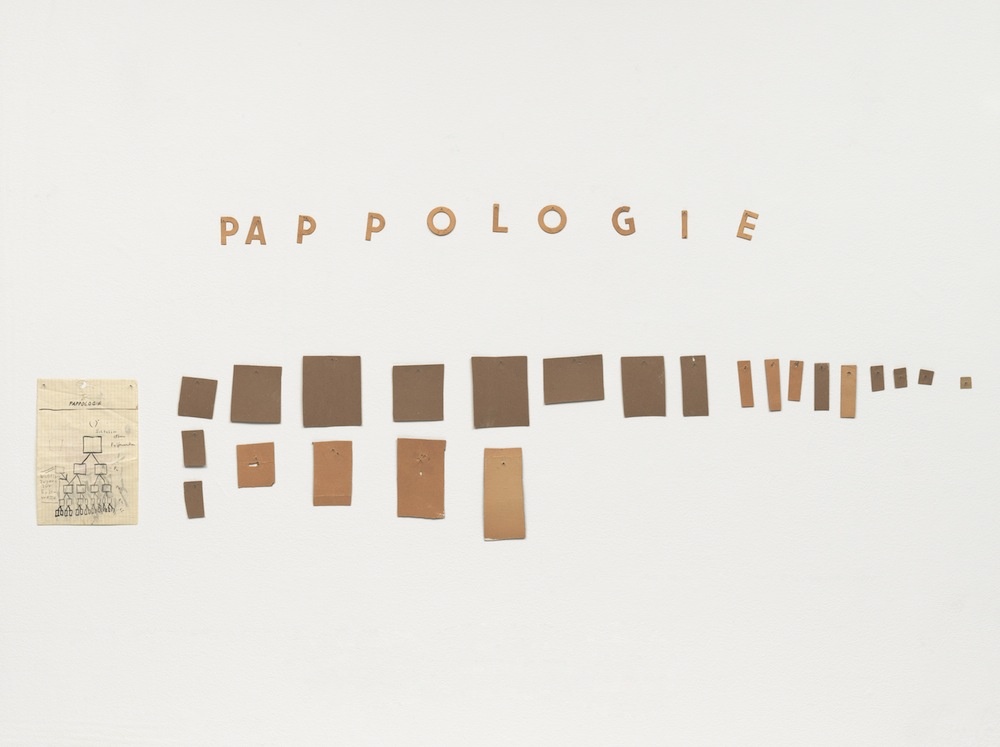
'Season's Hottest Trends' (2003)
The artist Sigmar Polke (1941-2010) is confounding. He worked across film, Xerox, painting, print, drawing, photography, sculpture, performance, and more—so many mediums that you’d be unlikely to look at a Polke piece and know it was his. There is no stand-out work, per se—no Sunflower, no Scream—which is perhaps one reason that his name has fallen afoul of the typical list of canonized, postwar painters. And yet there’s an ideological coherence through his art—running jokes, themes of anti-authority and anarchism, a policeman as a pig, a palm tree idly outlined on a piece of found fabric. Always playing with humor, Polke didn’t fuck the system—he mocked it.
It’s surprising to learn that the Tate Modern is about to hold a major retrospective of Polke’s work, and not only because he was a smartass and a punk, but because he never reached the level of recognition that many of his contemporaries achieved. He's like the less recognized Gerhard Richter; both are German, both began their careers in the early 60s, and both eventually helped coin the capitalist realism movement. The two artists created parallel paintings, but Polke never got as much credit—a Georges Braque to Richter's Picasso, in a way.

Sigmar Polke pictured right, with his friend Dieter Frowein-Lyasso. Photo via Wiki Commons
Born in the German-Polish no-man’s-land of Silesia during the Second World War, Polke fled with his family to Germany in 1945. It’s thought that around this time his father was working as an architect for the Nazis, and if there is truth in that, it resonates in his work. Clearly indignant toward führers, and troubled by his country’s repressive post-Holocaust silence on the subject, several Polke pieces confront guilt head on. He would tear images out of a eugenics guide that influenced the Nazis, and paint swastikas into his sketchbooks and murals. He once broke into a Dusseldorf gallery at night and installed a slideshow of ex-Nazi leaders under a banner that read “Art Will Make You Free," a play on “Work Will Make You Free”—the words that sat above the entrance to Auschwitz.

'The Sausage Eater' (1963)
During Polke’s teen years, his family relocated from a post-industrial East Germany to a wealthier West Germany, where the postwar economic boom had created a new, consumerist climate that Polke had never experienced before. In his early 20s, he would paint products, satirizing the market for luxury holidays and processed foods; he would depict a girl shoving frankfurters down her neck, or paint an ordinary chocolate bar against a striped background. By affording these items the status of the canvas, he mocked the elevated status they were given by society. The style was dubbed capitalist realism. It was the antithesis of social realism, which was popular at the time, and instead drew on the shorthand of advertising as a figurative comment on capitalism.

'Raster Drawing (Portrait of Lee Harvey Oswald)' (1963)
The style was also a nod to the consumer-driven nature of the Western art world. In 1963, less than a year after Andy Warhol’s famous screenprints of American movie icons Troy Donahue and Marilyn Monroe, Polke created his own version, portraying President John F. Kennedy’s assassin, Lee Harvey Oswald—as if to sarcastically say, “Buy this.” This sarcastic sense of humor stuck as Polke continued to pick upon the tropes of artistic trends and quietly deride them. One 1968 Malevich-inspired piece called Modern Art is described by Tate curator Mark Godfrey as “a collection of clichés amassed on a page”—arguably a parodist’s take on abstraction. You can walk the Tate retrospective playing "spot the references," knowing that the artist wasn’t borrowing the styles of others but acutely critiquing them.

'Modern Art' (1968)
Polke’s humor frequently paired high and low culture for the sake of irony, pitting what we might consider “good art” against “bad art." In a piece called Plastic Tubs (1964), he painted a series of containers with delicate and realistic shading, and then deliberately left half of the painting unfinished, as if to suggest that “proper art” is boring. Critics have argued that he painted the tubs to demonstrate the banality of existing forms, in the same way that he’d appropriate other artists’ traits, or appropriate images from magazines and use patterned textiles. He used to joke that this was laziness, but a retrospective that features his later materials—everything from snail juice to uranium—proves that Polke was neither lazy nor lacking in imagination.

'Cardboardology' (1968-69)
If anything, he was a smartass—a master contrarian. When MoMA curator Kathy Halbreich approached him about a retrospective almost a decade ago, he was reluctant. He wanted to keep people dislodged and uncertain. She describes his sometimes caustic nature, and what sounds like a zero tolerance to the apparatus of bullshit: “Polke’s friends recall his unusual ability to see through the deceit, subterfuge, and artifice of polite society,” Kathy says, “to penetrate the trivialities of the status quo in order to make visible its unstable values.”
Halbreich acknowledges the risk in exhibiting Polke’s work: that his humor could be misinterpreted as cynicism. On this point, she quotes Slavoj Žižek: “Comedy does not rely on the undermining of our dignity with reminders of the ridiculous contingencies of our terrestrial existence… Or, to put it another way, what effectively happens when all universal features of dignity are mocked and subverted? The negative force that undermines them is that of the individual, of the hero with his attitude of disrespect toward all elevated universal values, and this negativity itself is the only true remaining universal force.” To quote Žižek seems fitting; both he and Polke are pop culture theorists in a way, questioning everything we think that we know, and making you do the same.
Alibis: Sigmar Polke 1963–2010 runs from October 9, 2014, to February 8, 2015, at London's Tate Modern.
You can find out more about the Tate's film program on Polke, which runs alongside the exhibition, here.
Follow Amelia on Twitter.













































 Dr. Benjamin Rafii, a Persian ear, nose, and throat surgeon practicing in Los Angeles, explained that the phenomenon isn’t a reaction to Islam. “Iranians over the last 50 years have had a strong cultural relationship with Europe,” he said. “Applying the European ideals of beauty, Persian women are considered to have many desirable facial features—almond-shaped eyes, full high-arched eyebrows, strong cheekbones, but the nose stands out as big and misshapen, often with a prominent dorsal hump. It’s an easy target for cosmetic ‘optimization.’”
Dr. Benjamin Rafii, a Persian ear, nose, and throat surgeon practicing in Los Angeles, explained that the phenomenon isn’t a reaction to Islam. “Iranians over the last 50 years have had a strong cultural relationship with Europe,” he said. “Applying the European ideals of beauty, Persian women are considered to have many desirable facial features—almond-shaped eyes, full high-arched eyebrows, strong cheekbones, but the nose stands out as big and misshapen, often with a prominent dorsal hump. It’s an easy target for cosmetic ‘optimization.’”














